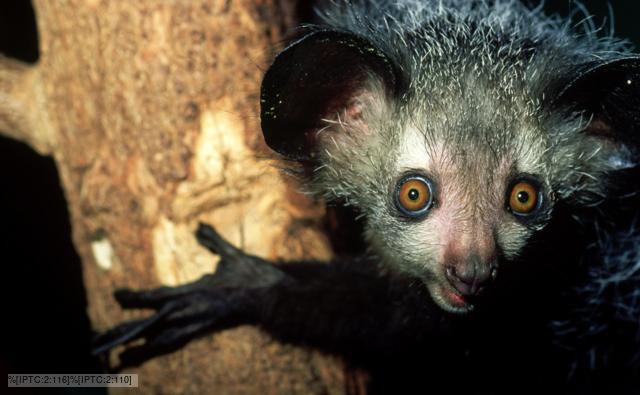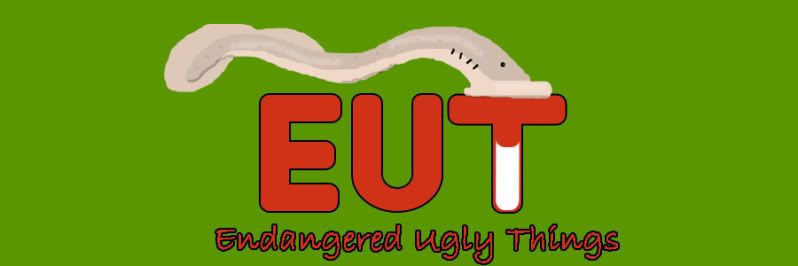 |
| Image from BBC |
The aye-aye (Daubentonia madagascariensis) has massive eyes and ears for better managing its nightlife. Like all lemurs2, they live in the dense jungles of Madagascar. Unlike the rest of the lemurs, their hands are long and spindly, with a skinny, elongated middle finger (I can’t find the average length, though). Aye-ayes tap the wood with this finger and listen for the correct echo with their huge ears, and gnaw a hole in the wood with their rat-like teeth before they begin rummaging for the grubs with their twiggy middle finger, filling much the same role as our woodpeckers. They will also eat fruit or vegetable material (or eggs), extracting the pulp using this finger3.
These raccoon-sized lemurs are usually solitary, moving along the treetops. Males’ home ranges are large (100-200 hectares) and encompass many females’ ranges. They tend to be curious and unafraid of people. Territories are marked by scents. When breeding season comes around, the females scream out to advertise their availability. The babies are weaned for about 7 months, and the females mate every three years.
Habitat destruction is the major threat to the aye-ayes, along with just about everything living in Madagascar. When agriculture invades their usual haunts, they will feed on the fruits, such as coconuts, becoming pests. Also, as mentioned in the beginning of the post, many Malagasy natives believe them to be omens of death, or other like portent, so they get killed on sight.
Many of the places aye-ayes live are protected, helping to save their habitat, and they are being introduced into other areas. There is a law against killing them, but it is not well enforced. Breeding programs exist at various zoos and the Duke University Lemur Center. But be warned, the little aye-ayes are even uglier.
1I get the feeling that the guys at Ugly Overload get this issue all the time.
2Which, appropriately enough, comes from the Latin “spirits of the night,” at least according to Wikipedia.
3ARKive has tons of wonderful pictures and videos, and it looks so much creepier when it’s moving.

6 comments:
Fantastic blog, great idea, great articles. May I suggest that if you haven't seen the Cuban Solenodon yet, it's well worth a look (http://en.wikipedia.org/wiki/Cuban_Solenodon).
It is highly endangered and VERY ugly. It was at the top of the predator tree on Cuba until settlers brought cats, dogs, mongoose etc. It has hollow teeth that it uses to inject venom into prey - highly unusual for a mammal.
Keep up the good work, fantastic blog.
Wonderful entry - the aye aye isn't anything that will ever be a beloved stuffed animal (except if they made it an Ugly Doll), but it's very cool!
~Natalie
http://critters.wordherders.net
Stupid butthole! The aye-aye is not ugly, you're problly just saying it is because it's better looking than you and Natalie they do have alot of aye-aye stuffed animalswhich are very cute just like the aye-aye so go curl up in a corner and die!
THANK YOU !!!!!!!!!!!!!!!!!!!!!!!!!
I had to do a report on an endangered animal and dicided to do it on the aye-aye since I read about it in your blog.It was really helpful.
Thanks again,
Bobby
Hi. I'm in 6th grade, and I'm doing a project on the Aye AYe. This blog helped me so much. Thanks.
Post a Comment